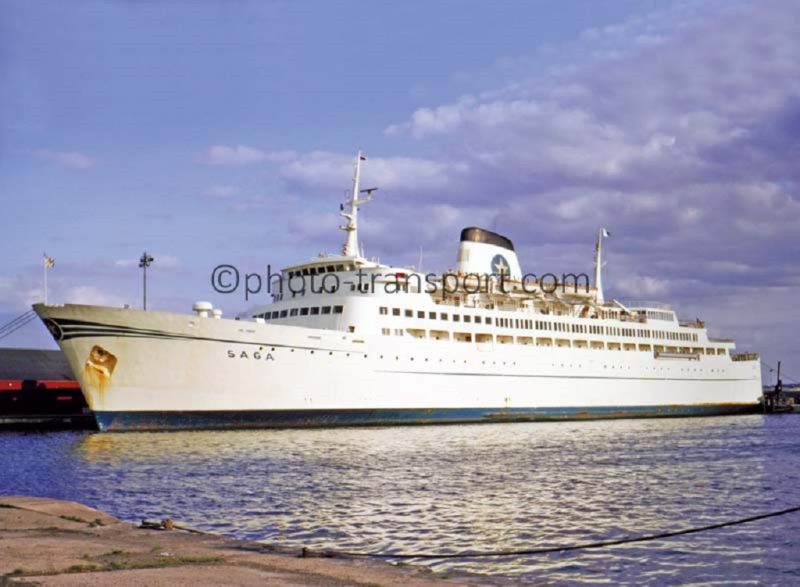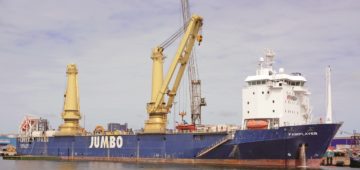The Final Trio of Swedish Lloyd Line Passenger Ferries

This trio of ferries were all built by the Lindholmen yard in Gothenburg harbour during 1966 and 1967, and all have had very long careers of between 37 and 54 years of service. Patricia was a favourite ship and was seen by many people in different parts of the world, and only during 2021 was she sent to the breakers yard at Alang in India. The Lindholmen yard was also in service for the very long period between 1848 and 1976, and was named after the small leaf of the Linden tree that grew on the island of Gota Alv in Gothenburg harbour. The first iron hulled sailing ship built there was Gustaf II Adolf when she was launched on 13th December 1854. After the yard was dismantled, it became a training centre for unemployed shipyard workers of all the former yards in Gothenburg in the early 1990s, and then became the present Lindholmen Science Park in the late 1990s.
HISTORY OF SWEDISH LLOYD LINE
The company was founded on 23rd January 1869 for coastal tramping around the Baltic and North Seas. The first ship owned by the company was the flush decked Sweden of 500 dwt and 140 feet in length and delivered in 1869 by the Keiller yard in Gothenburg harbour, later to become the famous Gotaverken yard. Engineers F. Hansson and J. Norin and ship master J. F. Olsson had designed the vessel with a compound steam engine aft of 45 horse power giving a service speed of seven knots, and four masts for cargo handling. Adolph Meyer was elected Chairman of the company, and the Royal Swedish Academy of Sciences drew up the Articles of Association of the new company, which had a share capital of 100,000 riksdaler. However, the new ship sank off the coast of Norway on Boxing Day of 1869, but was replaced by Sweden (2) of 600 dwt from the Lindholmen yard in 1871.

At the end of 1872, the company owned four steamers named Sweden, Norway, Denmark and Scandinavia, all of 600 dwt, with the company capital then increased to 575,000 riksdaler. In 1873, a first regular service was begun between Christiania (later Oslo) and Newcastle, but the trade was insufficient and the service was discontinued in the Autumn of the same year.
The company was quickly after only a year of trading also able to take a large part of the Swedish transhipment trade at Hamburg by acquiring an existing shipping line. Two steamers ran on the Hamburg line in 1874 and the service was extended to Bordeaux. Also in the same year of 1874, a trade to the Mediterranean was established, run by the fast steamer Helios of 725 dwt and completed on the Tyne in 1857. The company had a fleet of ten steamers in 1890, and the Mediterranean trade had by 1913 established a monopoly of trade between Swedish and Baltic ports and Mediterranean ports. Adolph Meyer had been the driving force of the company until 1893, when W. Frodi took over the leadership for the next twenty years until Herbert Metcalfe took over the management in 1912. He then established tariff agreements with the foreign shipping companies operating routes between the Mediterranean and Northern Europe. In 1913, trade began to Dunkirk, which six years later was extended to Calais and Dieppe, and Mediterranean shipping was restructured to offer services between Sweden and Southern France, Portugal, Spain, Italy and North Africa. Two new steamers, Anglia of 3,230 dwt and Liguria of 3,315 dwt, were completed by the Lindholmen yard in 1914. Anglia was unfortunately lost in the same year by collision in the River Parana after loading a cargo of grain homeward to Sweden.
Subscribe today to read the full article!
Simply click below to subscribe and not only read the full article instantly, but gain unparalleled access to the specialist magazine for shipping enthusiasts.






Comments
Sorry, comments are closed for this item